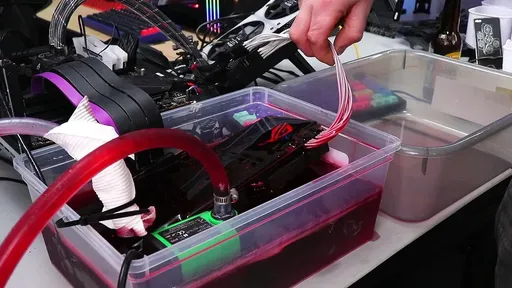An unusual immersion cooling experiment: an enthusiast used transmission fluid and a Dodge Journey radiator to cool a GTX 1080 Ti graphics card, achieving performance gains of up to 16%.

G. Ostrov
An unusual experiment has emerged in the world of computer cooling that demonstrates just how far enthusiasts are willing to go to improve performance. One experimenter decided to completely submerge a GeForce GTX 1080 Ti graphics card in automotive transmission fluid.
The Experiment Setup
Creating this DIY immersion cooling system involved using highly unconventional components:
- Transmission fluid as the cooling medium
- A Dodge Journey transmission cooler radiator
- GeForce GTX 1080 Ti graphics card as the cooling subject
Test Results
The experiment showed impressive results. Thanks to efficient heat removal, significant performance gains were achieved during overclocking:
- Minimum performance gain was 7%
- Maximum gain reached 16%
- Graphics card temperatures remained consistently low
How Immersion Cooling Works
Immersion cooling is based on completely submerging electronic components in a dielectric fluid. In this case, the transmission fluid acts as a heat transfer medium, efficiently removing heat from all surfaces of the graphics card.
The automotive radiator provides efficient heat exchange with the surrounding environment, allowing the system to maintain optimal coolant temperature.
Advantages and Risks
This cooling approach has both advantages and potential risks:
Advantages:
- Very low operating temperatures
- Potential for significant overclocking
- No fan noise
- Uniform cooling of all components
Potential Risks:
- Complex system maintenance
- Need for specialized knowledge
- Possible component damage with improper assembly
- High recovery costs in case of problems
More detailed information about the experiment can be found on the official Tom's Hardware website.
If you encounter any problems, write to us, we will help you quickly and efficiently!




